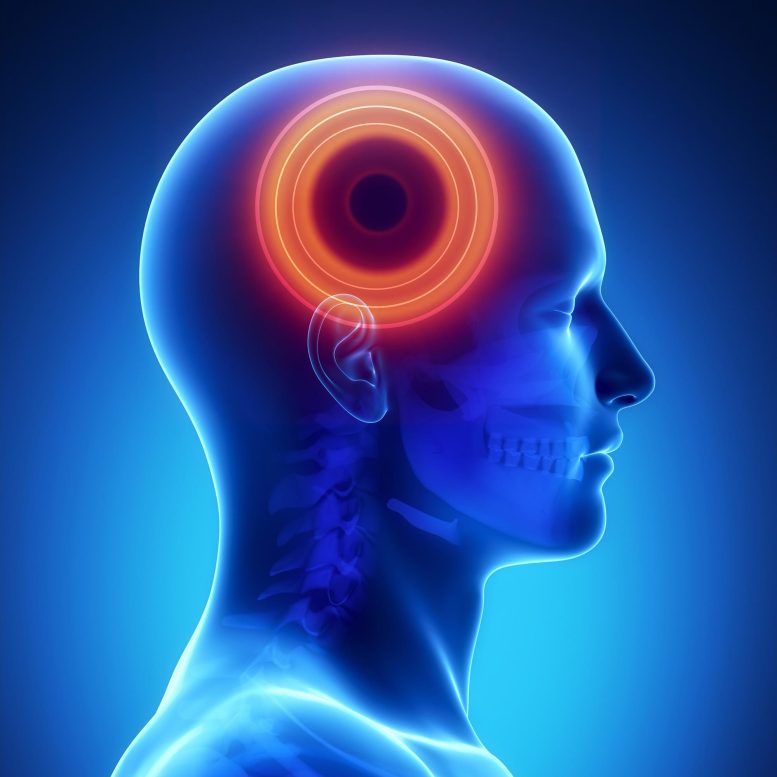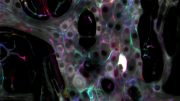
A recent study by the University of Arizona Health Sciences has uncovered sex-specific differences in nociceptors, the nerve cells responsible for pain perception. The research reveals that males and females experience pain differently due to distinct activation thresholds in nociceptor cells, influenced by hormones like prolactin and orexin B. These findings suggest the need for gender-specific treatments for pain management, challenging previous assumptions and paving the way for precision medicine approaches that consider a patient’s sex as a critical factor.
Researchers have discovered sex-specific differences in the nerve cells that generate pain, paving the way for personalized pain management treatments based on patient sex.
Research indicates that men and women experience pain differently, but the reasons behind this have remained unclear. A new study from the University of Arizona Health Sciences, published in the journal BRAIN, has now identified functional sex differences in nociceptors, the specialized nerve cells that produce pain.
The findings support the implementation of a precision medicine-based approach that considers patient sex as fundamental to the choice of treatment for managing pain.
“Conceptually, this paper is a big advance in our understanding of how pain may be produced in males and females,” said Frank Porreca, PhD, research director of the Comprehensive Center for Pain & Addiction at UArizona Health Sciences and professor and associate department head of pharmacology at the UArizona College of Medicine – Tucson. “The outcomes of our study were strikingly consistent and support the remarkable conclusion that nociceptors, the fundamental building blocks of pain, are different in males and females. This provides an opportunity to treat pain specifically and potentially better in men or women, and that’s what we’re trying to do.”
Porreca and the research team focused their study on the excitability of nociceptor cells located near the spinal cord in the dorsal root ganglion. Nociceptors, when activated by damage or injury, send a signal through the spinal cord to the brain that results in the perception of pain. Nociceptors are also adaptable in their response to injury.
For example, touching a hot stove is a high-intensity stimulus, while a shirt collar rubbing a sunburn is low-intensity, yet both produce the perception of pain. In injury settings such as sunburn, pain medications, including nonsteroidal anti-inflammatory drugs such as ibuprofen, work by normalizing the threshold for nociceptor activation, thereby blocking pain produced by low-intensity stimuli such as the rubbing of a shirt.
Hormonal Influence on Pain Perception
Following up on prior research on the relationship between chronic pain and sleep, unexpected sex differences led Porreca to choose two substances – prolactin and orexin B – for this study. Prolactin is a hormone responsible for lactation and breast tissue development; orexin is a neurotransmitter that helps to promote staying awake. However, both prolactin and orexin have many other functions that are only now being revealed.
The research team used tissue samples from male and female mice, nonhuman primates and humans to test the effect of prolactin and orexin B on nociceptor activation thresholds that can allow low-intensity stimuli to produce pain.
“What we found is that in males and females – animals or humans – what changes the thresholds of the nociceptors can be completely different,” Porreca said. “When we added the sensitizing substances that lower these thresholds for activation, we found that prolactin only sensitizes female cells and not male cells, and orexin B only sensitizes male cells and not female cells. The startling conclusion from these studies is that there are male nociceptors and female nociceptors, something that has never previously been recognized.”
Taking the research one step further, they then blocked prolactin signaling and orexin B signaling and examined the effect on the threshold for activation of the nociceptors. As anticipated, blocking prolactin signaling reduced nociceptor activation in females and had no effect in males, while blocking orexin B signaling was effective in males and not in females.
“Until now, the assumption has been that the driving mechanisms that produce pain are the same in men and women,” Porreca said. “What we found is that the basic, underlying mechanisms that result in the perception of pain are different in male and female mice, in male and female nonhuman primates, and in male and female humans.”
The findings suggest a new way to approach treating pain conditions, many of which are female prevalent. Migraine and fibromyalgia, for example, have female-to-male ratios of 3:1 and 8 or 9:1, respectively.
Future Directions in Pain Research
Porreca believes preventing prolactin-induced nociceptor sensitization in females may represent a viable approach for the treatment of female-prevalent pain disorders, while targeting orexin B-induced sensitization might improve the treatment of pain conditions associated with nociceptor activation in males.
Moving forward, Porreca and his team will continue looking for other sexually dimorphic mechanisms of pain while building on this study to seek viable ways to prevent nociceptor sensitization in females and males. He is encouraged by his recent discovery of a prolactin antibody, which could prove useful in females, and the availability of orexin antagonists that are already Food and Drug Administration-approved for the treatment of sleep disorders.
“We are bringing the concept of precision medicine – taking a patient’s genetics into account to design a therapy – to the treatment of pain,” Porreca said. “The most basic genetic difference is, is the patient male or female? Maybe that should be the first consideration when it comes to treating pain.”
Reference: “Nociceptors are functionally male or female: from mouse to monkey to man” by Harrison Stratton, Grace Lee, Mahdi Dolatyari, Andre Ghetti, Tamara Cotta, Stefanie Mitchell, Xu Yue, Mohab Ibrahim, Nicolas Dumaire, Lyuba Salih, Aubin Moutal, Liberty François-Moutal, Laurent Martin, Edita Navratilova and Frank Porreca, 3 June 2024, Brain.
DOI: 10.1093/brain/awae179
The research was funded by the National Institute on Drug Abuse, the National Institute of Neurological Disorders and Stroke, and the U.S. Department of Defense.
Porreca’s University of Arizona Health Sciences co-authors include associate professor Edita Navratilova, PhD; assistant professor Laurent Martin, PhD; postdoctoral research associate Grace Lee, PhD; doctoral student Mahdi Dolatyari; research program manager Stefanie Mitchell; researcher Xu Yue and former doctoral student Harrison Stratton, PhD; all of the College of Medicine – Tucson Department of Pharmacology; and Mohab Ibrahim, MD, PhD, professor in the College of Medicine – Tucson Department of Anesthesiology and medical director of the Comprehensive Center for Pain & Addiction. Other co-authors include assistant professor Aubin Moutal, PhD, research assistant professor Liberty François-Moutal, PhD, doctoral student Nicolas Dumaire and graduate research assistant Lyuba Salih, all from Saint Louis University; and Andre Ghetti and Tamara Cotta of Anabios in San Diego.









Be the first to comment on "Biological Differences in How Men and Women Perceive Pain Discovered"